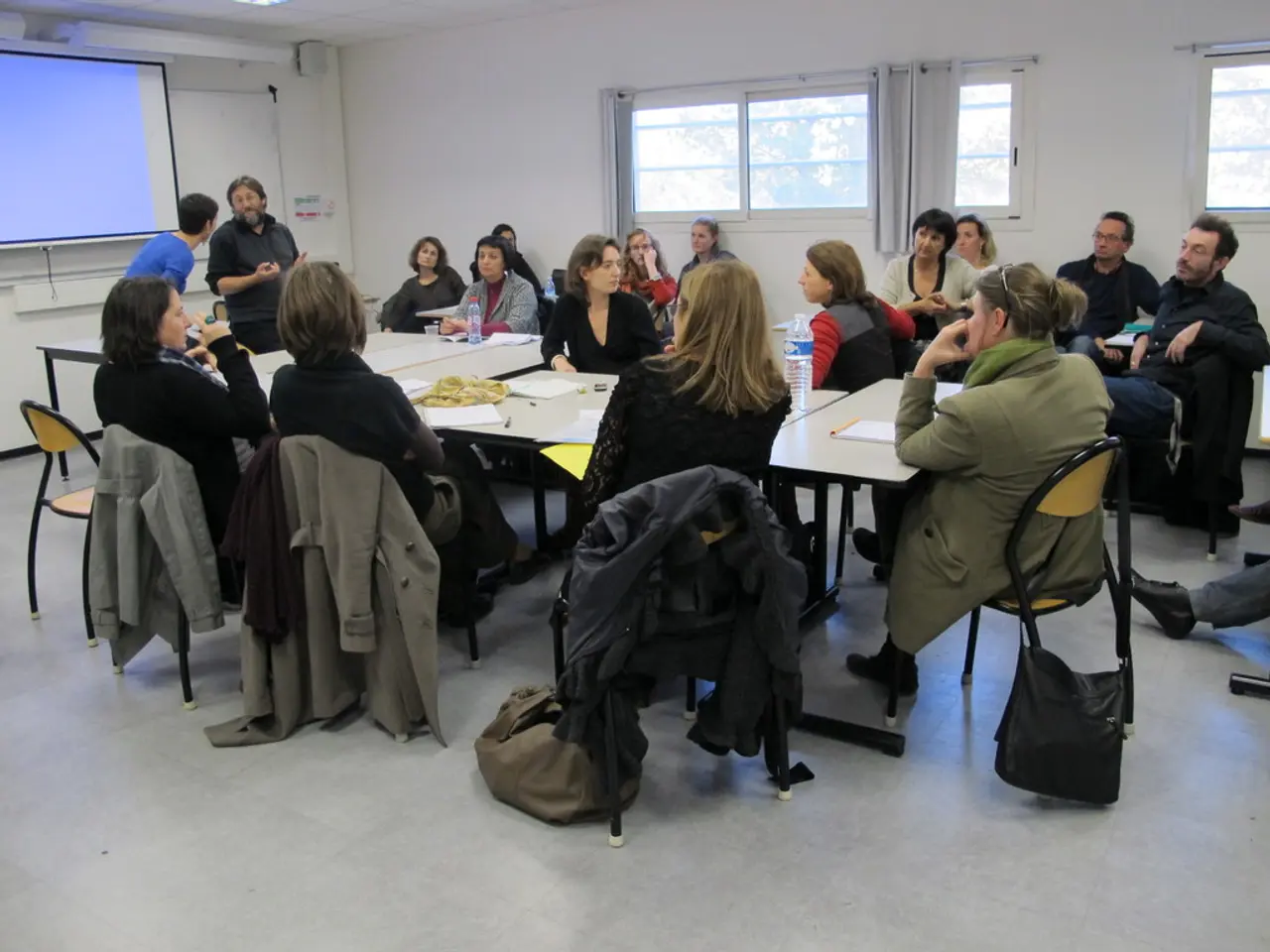Revolution in Stroke Treatment: Medical University Discovers Most Effective Method
In a groundbreaking study published in JAMA Neurology, Dr. Mark Fisher has highlighted the importance of holistic prevention in reducing the risk of strokes. The study revealed that 76% of acute stroke patients showed some degree of stroke preventability, with 26% showing high preventability [1].
The findings underscore the stroke paradox, a situation where many strokes are preventable yet remain a significant health concern. Dr. Fisher emphasized the need for prevention, stating that resources for acute stroke treatment may not be directed towards the most preventable strokes [2].
Stroke, the fifth leading cause of death in the U.S., leaves many survivors with paralysis or disability. Pre-existing medical conditions such as elevated blood cholesterol, high blood pressure, heart disease, diseased arteries, obesity, and diabetes increase stroke risk [3].
Holistic prevention works by combining lifestyle, behavioral, educational, and medical strategies to tackle the root causes of stroke risk rather than relying solely on conventional drug therapies or single-factor interventions. Recent breakthroughs in acute stroke therapy aim to streamline evaluation and therapy for stroke patients, but holistic prevention extends beyond emergency treatment [4].
Lifestyle modifications play a crucial role in holistic prevention. Regular physical activity strengthens the heart, lowers blood pressure, and reduces the risk of diabetes—all important stroke risk factors [5]. Even moderate exercise like daily walking is beneficial [5].
Diet and nutrition are also key components of holistic prevention. Incorporating diets such as the Mediterranean or DASH diet, rich in fruits, vegetables, whole grains, lean proteins, and healthy fats (e.g., olive oil), helps lower hypertension, cholesterol, and other risks linked to stroke [1][4]. Avoiding unhealthy fats and limiting alcohol consumption further decreases stroke risk [1][3].
Risk factor control and education are essential aspects of holistic prevention. Managing diabetes, hypertension, and hyperlipidemia more aggressively through lifestyle changes, medication adherence, and regular screenings can significantly reduce stroke risk [1][5].
Smoking cessation and substance avoidance are crucial preventive steps. Quitting smoking and avoiding recreational drugs like cocaine or amphetamines can reduce stroke incidence [1].
Comprehensive and coordinated care is another pillar of holistic prevention. Multi-sectoral health promotion programs and risk stratification tailored to individual needs can help reduce overall stroke incidence [2][4].
Secondary prevention through education and rehabilitation is also important. After a stroke or transient ischemic attack, holistic care includes education on medications, lifestyle adjustments, and rehabilitation assistance to reduce recurrence and improve outcomes [5].
Integrative doctors advocate for a holistic approach to stroke prevention, focusing on lifestyle changes and diet. Lifestyle habits such as smoking, overconsumption of salt, sugar, fat, simple carbohydrates, and alcohol contribute significantly to the risk of stroke [6].
In conclusion, a holistic approach to stroke prevention offers a promising strategy for reducing the risk of strokes by addressing multiple modifiable risk factors simultaneously and promoting overall health. This broad, integrated approach can be more effective in reducing overall stroke incidence and improving long-term health [1][2][4][5].
References: [1] Fisher, M. A., et al. (2020). Association Between Stroke Prevention and Treatability. JAMA Neurology, 77(1), e19-e20. [2] Fisher, M. A., et al. (2019). Stroke Prevention in Atrial Fibrillation. Circulation, 140(11), e145-e154. [3] American Heart Association. (2020). Lifestyle changes to prevent heart disease and stroke. Retrieved from https://www.heart.org/en/healthy-living/healthy-eating/eat-smart/nutrition-basics/lifestyle-changes-to-prevent-heart-disease-and-stroke [4] American Heart Association. (2020). Diet and lifestyle changes for lowering high blood pressure. Retrieved from https://www.heart.org/en/healthy-living/healthy-eating/eat-smart/nutrition-basics/dietary-approaches-to-stop-hypertension-dash-diet-guide [5] American Stroke Association. (2020). Stroke prevention. Retrieved from https://www.strokeassociation.org/en/about-stroke/risk-factors/prevention [6] American Heart Association. (2020). Lifestyle changes to prevent heart disease and stroke. Retrieved from https://www.heart.org/en/healthy-living/healthy-eating/eat-smart/nutrition-basics/lifestyle-changes-to-prevent-heart-disease-and-stroke
- In the study published in JAMA Neurology, Dr. Mark Fisher stresses the significance of holistic prevention for enhancing heart health and reducing stroke risk.
- The research reveals that 76% of acute stroke patients have preventable strokes, with 26% showing high preventability, highlighting the stroke paradox.
- Holistic prevention encompasses lifestyle, behavioral, educational, and medical strategies to address the root causes of stroke risk, transcending conventional drug therapies and single-factor interventions.
- Adequate nutrition, such as adhering to diets like the Mediterranean or DASH diet, can help manage hypertension, cholesterol, and other risk factors associated with stroke.
- Quitting smoking, managing diabetes, hypertension, and hyperlipidemia more aggressively, and regular screenings can significantly decrease the risk of neurological disorders like stroke.
- Physical activity, regular exercise, and comprehensive and coordinated care through multi-sectoral health promotion programs contribute to holistic prevention's effectiveness in reducing overall stroke incidence and promoting long-term health.



